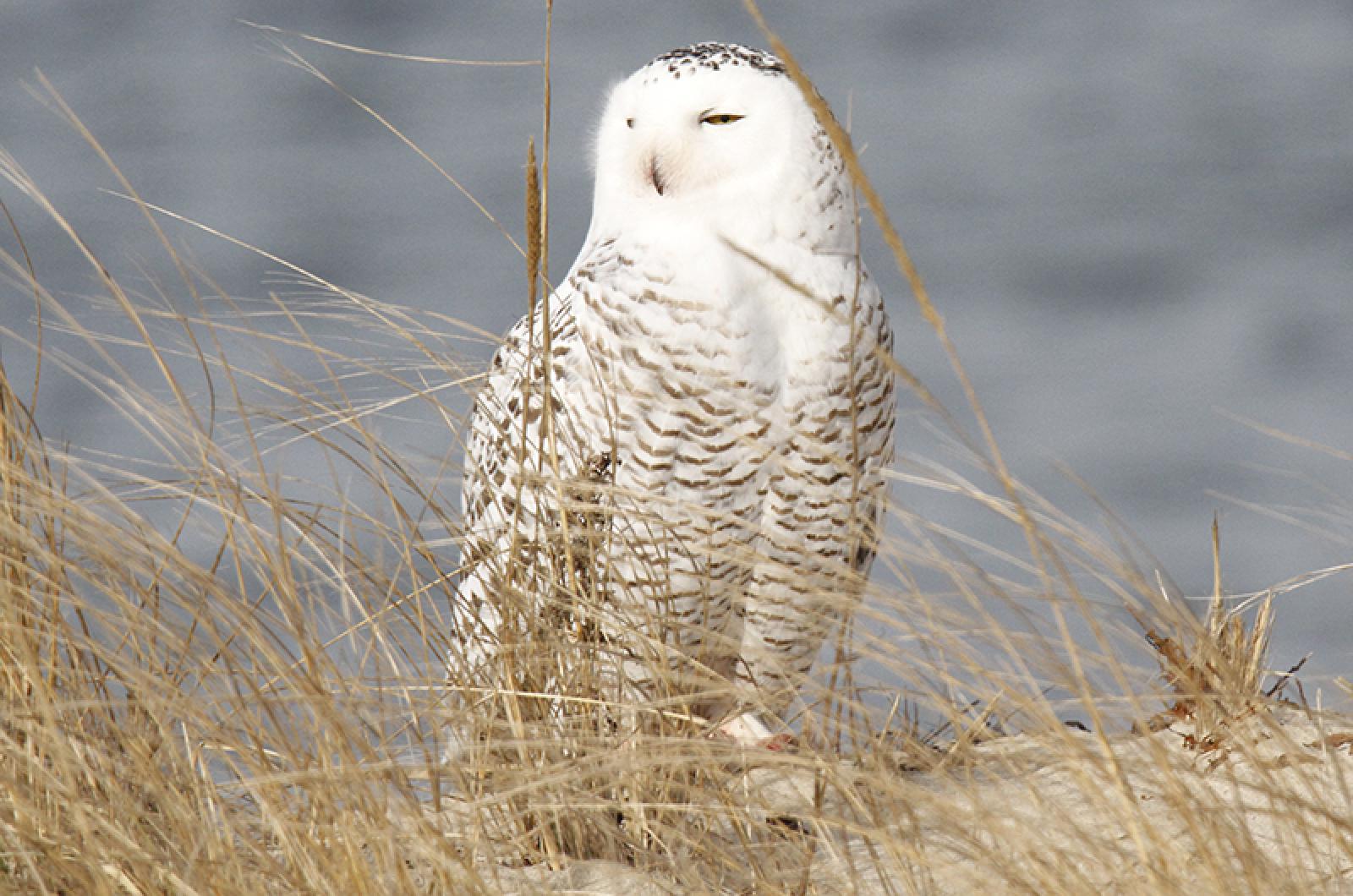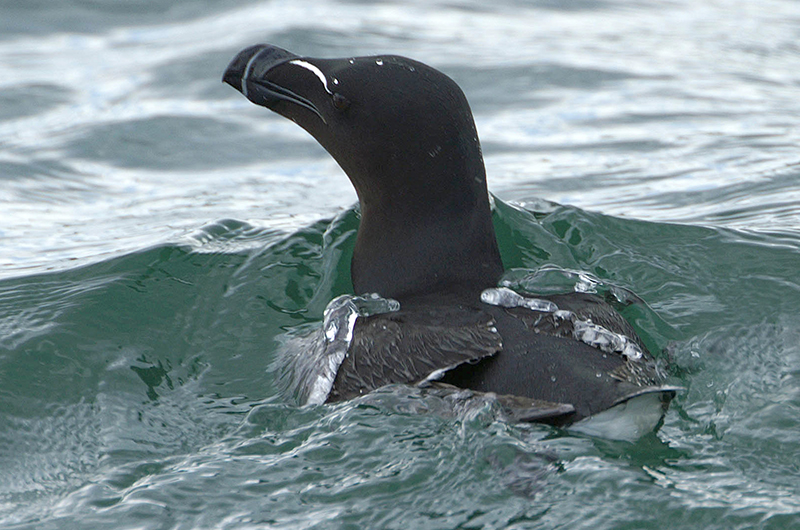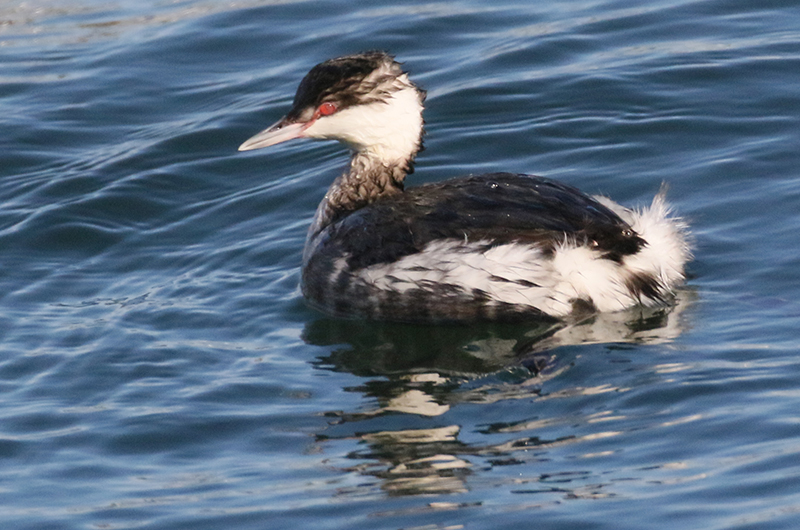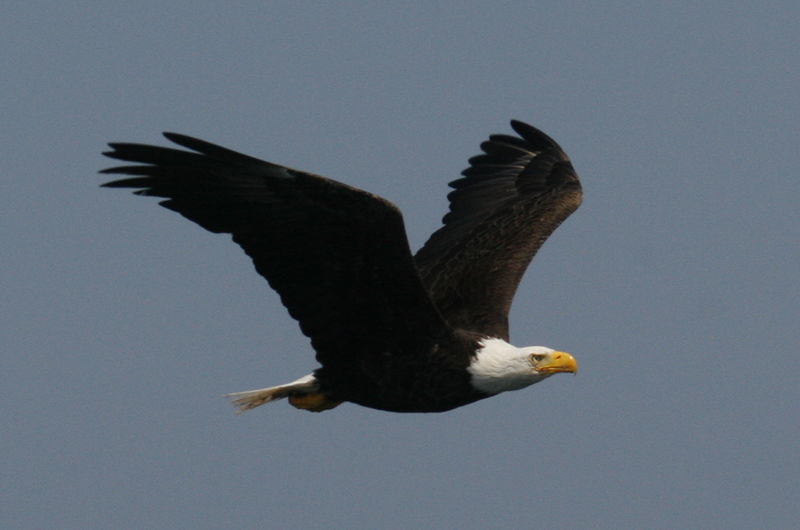Many of the birds that are here for the winter season are migrants from much further north. They have already migrated south, and we live in their south. Many of our breeding birds spend their winters in Florida or the tropics; our climate is the equivalent of Florida for these very northern breeding species.
Of the four northern species observed this week, the snowy owl tops the list. It is hard to get further north than where these owls live on the Arctic ice and most of them are still up there, where it is still nighttime all day long. But in what seems to be an annual tradition now–the new normal–quite a few have migrated south. This majestic species has already been seen on Nantucket, Cape Cod and near the Massachusetts/Rhode Island border, as well as on Long Island and as far south as Maryland. Now, at long last, we finally got our first snowy owl of the season, sighted by Mike Berninger at the Martha’s Vineyard Airport on Dec. 22. These large, mostly white owls tend to be found in agricultural fields, airports and on our beaches; these are the areas that most closely resemble their homeland tundra.
Michael Whittemore found five dovekies on Dec. 20 in Vineyard Sound off West Chop, in very close to shore. This is our smallest alcid, the northern version of penguins. It is nice to get a report of free-swimming dovekies, as most of them normally spend their winters well off-shore. Many of our sightings of this species are of “wrecked” birds that are blown ashore, often into our woodlands, where they are unable to get airborne. If you should find one of these birds on land, please save their lives by transporting them to a large saltwater pond as soon as possible, where they will be able to resume feeding and to fly or swim to more typical habitats.
On Dec. 20, Sarah Mayhew visited Quansoo and found both a razorbill and a horned grebe on a mostly calm ocean. Warren Woessner also found a horned grebe off State Beach on Dec. 21.
Bird Sightings
Lanny McDowell spotted an adult bald eagle flying around one of the south shore coves on Dec. 20. This species is now a fairly regular winter resident of our coastal ponds, more often immatures than adults, although their numbers are few. Typically, the eagle will startle any flocks of ducks, which will either dive under water or fly away. A couple of flocks of mallard were put into flight by this eagle; photos he took were later examined and he found that a wood duck was mixed in with the mallards.
Three to five ravens are still frequenting Thimble Farm. Randy Rynd reports that three of them are there regularly while she finds all five of them occasionally. She also heard a great horned owl calling on Dec. 19; there may have been a pair duetting–mated pairs will sing back and forth–but the calling stopped just as she realized that two birds were calling.
Happy and Steve Spongberg spotted 20 to 30 turkey vultures over the Playhouse and tennis courts in Vineyard Haven around 3:30 p.m. on Dec. 17. That many of them at that time of day are likely settling into their winter nighttime roost, which used to be near the Tisbury School, a site that was abandoned a few years back.
Sharon Simonin observed a female northern harrier at the Farm Institute on Dec. 23, while the same day Lanny McDowell observed a male–they are gray and white rather than brown–on nearby Norton Point. Ms. Simonin also spotted a small flock of sanderling at the seawall near Harthaven that day and a common loon in Oak Bluffs Harbor on Dec. 22.
James Suozzo had a few golden-crowned kinglets visiting his feeders along with the more abundant black-capped chickadees on Dec. 5.
Christmas Bird Count
The annual Martha’s Vineyard Christmas Bird Count will take place on Jan. 5, and the field teams are just about set. There will be at least a dozen field teams covering their assigned part of the Vineyard that day. You can also participate without even leaving your house; count and report the birds visiting your yard, even if you just have your usual birds. There are forms and instructions on how to count the birds on the BiodiversityWorks website: biodiversityworksmv.org/our-projects/mv-christmas-bird-count.
Compiler Luanne Johnson prefers that you report your sightings via e-mail to mvbirdcount@gmail.com, or you can call in your sightings to Felix Neck (508-627-4850) between 1 and 4 p.m. when volunteers will be there to answer your call. Thank you in advance for your help with this count, which has been conducted annually since 1960.
It is now winter and a few of our winter residents are still showing up. Please report all your sightings to birds@mvgazette.com.
Robert Culbert schedules private Guided Birding Tours and is an ecological consultant with Nature Watch LLC living in Vineyard Haven.








Comments
Comment policy »